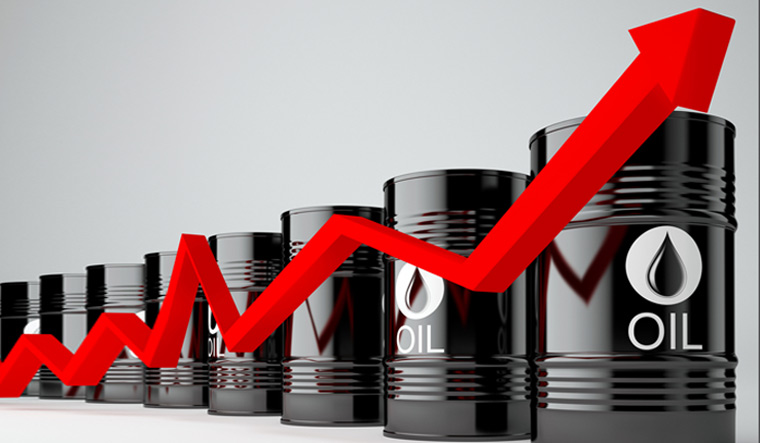
Brent breaches $100: why it’s bad for the economy and the household
India imports 80% of its oil needs, so a price hike there hits most industries here; for the common man, it reflects in inflation

Brent crude prices crossed the $100 per barrel mark on Thursday for the first time in eight years, as Russian President Vladimir Putin authorised a military operation in the east Ukrainian region of Donbass. Globally, while governments expressed shock and dismay, stock markets crashed and oil prices surged. By 10.10 IST, Brent oil had zoomed over 40 per cent to hit $101.2.
The Brent spike is largely a function of concerns over supply-side disruptions. A full-fledged Russian invasion of Ukraine is likely to disrupt crude supplies globally, as key pipelines pass through those geographies. The supply issues will escalate if the US and the EU retaliate by announcing hard-hitting sanctions on Russia.
The trend is a continuation of the surge in Brent seen over the past few weeks amid rising geopolitical tension between Ukraine and Russia, the world’s second-largest oil producer.
Also read: Big Oil already a victor from Ukraine
“We expect crude oil prices to remain volatile and rise from current levels if geopolitical concerns do not materially ease,” said a research report from Kotak Institutional Equities. “We maintain our current oil price estimate of $80 per barrel in FY2023 for the time being, while noting upside risks if ongoing geopolitical concerns persist over the coming months.”
What rising Brent may do to Indian economy
Since India imports over 80% of its oil requirements, a surging Brent can erode the exchequer. Also, oil imports account for a quarter of the nation’s total imports. When the country pays more for Brent, its current account deficit, the difference between the net value of goods and services imported vis-à-vis those exported, widens.
High oil prices also tend to bring down investor sentiment. This reflects in stock markets turning volatile and entering a bearish phase, which in turn hurts the market capitalisation of companies. Already, over the first two months of 2022, foreign portfolio investors (FPIs) have pulled out ₹51,703 crore, said media reports. The India rupee, already on a sticky wicket, is likely to take a corresponding hit, too.
Further, when Brent crude prices surge, the government is forced to increase the subsidy on LPG and kerosene, which pushes up the subsidy bill.
This apart, rising Brent can erode the profitability of a gamut of user industries. For instance, it has a direct bearing on the prices of aviation turbine fuel (ATF). ATF prices have risen 19 per cent to ₹90,519 per kl from ₹76,062 per kl on January 1, said reports. Any further hike could substantially impact the performance of airlines, which are just getting back on their feet after the COVID shock.
Industries that use petroleum products as raw materials — such as plastics and petrochemical products makers — are also eyeing the Brent surge with anxiety. For paint companies, raw materials such as monomers and titanium dioxide are derived from crude, and account for over half of the total expense. For tyre makers, crude derivatives constitute around a third of the total raw material cost. Raw materials apart, packaging costs also go up for most sectors.
Hole in the pocket of consumers
The nation has seen fuel costs zoom over the past year, thanks mainly to volatile crude. Fuel prices, which have been kept stable due to the ongoing Assembly elections, are likely to rise after March 7, the last day of polling. The Ukraine crisis-triggered Brent surge will only worsen the trend.
That apart, industries impacted by the oil price hike — from FMCG firms to pharma companies to cab aggregators — will pass on the costs to their consumers. So, an across-the-board price increase could well be anticipated. For inflation-hit India, the going is likely to get tougher.

